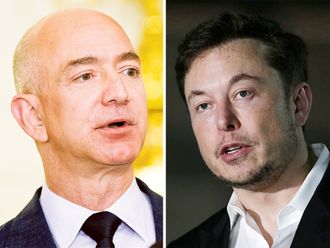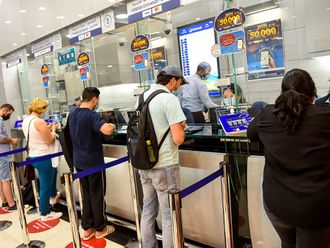Abu Dhabi: The cost of solar energy has dropped below the cost of diesel generation worldwide for communities living away from the electricity grid, International Renewable Energy Agency (Irena) said on Tuesday.
Renewable energy has entered into a new virtuous cycle of falling costs, increasing deployment, and accelerated technological progress, according to an Irena report launched during the World Future Energy Summit (WFES).
“The past two years have seen a remarkable increase in the competitiveness of renewable energy,” says Adnan Ameen, Irena Director General.
The agency said the latest study analysing 8000 medium- to large-scale renewable power generation projects will help reverse an outdated negative perception that renewable energy is not competitive and it was a major hurdle.
Falling cost will help achieve Irena’s target of doubling the renewable energy share by 30 per cent by 2030, a senior official told Gulf News.
To make decision makers aware of this new trend, Irena will intensify networking efforts among world nations, said Frank Wouters, Deputy Director General of Irena.
With the current trend, the share of renewable energy will be just 21 per cent in 2030, but Irena’s efforts can fill that gap, considering the participation of 160 members-159 nations and European Union, he said.
The agency is developing required tools such as Global Renewable Atlas and Renewable Readiness Assessment report etc, Wouters pointed out. “That will also help achieve the target.”
The comprehensive analysis of the costs and performance of renewable power generation can be found on Irena website — on www.irena.org.
Its analysis of reveals that renewables are fast becoming the most competitive option for new electricity grid supply and swift grid extension, and are already the default economic solution for off-grid power supply.
The agency said 2012 was the year when renewables came of age –able to compete with other power generation technologies, and increasingly without subsidies. “It is time for the public debate to reflect this changing reality,” Irena director general said.
Irena is launching the Renewable Costing Alliance to raise awareness of falling costs, and to collect more data. It will bring together government agencies, financial institutions, equipment manufacturers, project developers, utilities and research institutions.
FACT BOX
— Renewables account for almost half of new electricity capacity installed and costs are continuing to fall, leading a renewable revolution.
— In 2011, additions included 41 GW of new wind power capacity, 30 GW of solar photovoltaic (PV), 25 GW of hydropower, 6 GW of biomass, 0.5 GW of concentrated solar power (CSP) and 0.1 GW of geothermal power.
— The levelised cost of electricity (LCOE) is declining for wind, solar PV, CSP and some biomass technologies, while hydropower and geothermal electricity produced at good sites are still the cheapest way to generate electricity.
— The rapid growth in the deployment of solar and wind is driving a convergence in electricity generation costs. When excellent local resources are available, mature technologies, such as biomass, geothermal and hydropower, can all produce electricity at very competitive costs, although in limited quantities.











